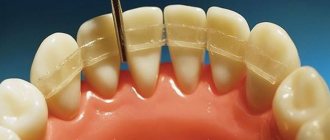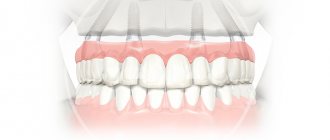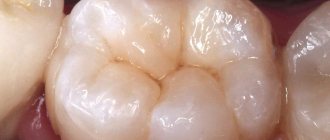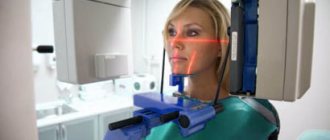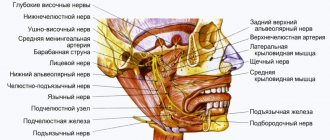Doctors Cost
Price list Doctors clinic
The fear of visiting the dentist often forces you to put off dental treatment until later; the decision is postponed over and over again until the pain becomes unbearable. Everyone knows the importance of maintaining oral health; from a very young age, parents tell their children these common truths. A small number of people are able to overcome their fear; often the situation reaches the point where the teeth can no longer be treated. We have to make a decision about deletion.
In fact, there may be another reason for postponing a visit to the doctor; busy people simply cannot put things off in order to take care of their health in a timely manner. One circumstance is superimposed on another, and at the decisive moment the reluctance to visit the dentist takes over again. In such situations, the best solution would be a service such as tooth extraction in a dream - when you wake up, there will be nothing to worry about.
What is piezosurgery? Features, nuances, indications
Piezosurgery (non-contact surgery) is an innovative method of performing surgical operations based on the influence of ultrasound. The procedure is performed using a piezotome - an ultrasonic knife that produces vibrations, thereby carefully and as accurately as possible affecting the tissues of the oral cavity. This is a more “advanced” alternative to well-known surgical techniques in dentistry, the ability to abandon traditional burs and bone drills. During the procedure, the effect is not mechanical, but ultrasonic.
This is interesting! The piezosurgical dental instrument was invented in 1988. The action of the knife is based on oscillations of ultrasound waves (from 60 to 200 mm/sec), which ensure safe and precisely targeted cutting of gums and hard tissues. Soft tissues, as well as blood vessels and nerves are not injured.
Main indications for piezosurgery:
- removal of patients' teeth, including wisdom teeth;
- building up bone tissue before implantation (in particular, taking material to prepare the area for surgery);
- removal of cystic formations, granulomas;
- sinus lift or elevation of the maxillary sinuses;
- microsurgical operations on the jaw, for example, opening of the mandibular alveolar nerve, removal of tumors, etc.
Despite the fact that the operation has a minimal number of contraindications, piezosurgery is still not recommended for some patients. For example, people with diabetes, oncology, serious disorders of the nervous system, problems with blood clotting, and also if they have a pacemaker.
Also, one of the contraindications for the procedure is the presence of fillings in the tooth. When using ultrasound, there is a high risk of damage to the filling material, so when working with such a knife, high qualifications are required.
Dentistry for those who love to smile
+7
Make an appointment
There is a better way!
Regular dental forceps may not be very effective, and when you compare traditional tooth extraction methods to similar events in your everyday life, your views on tooth extraction may change radically. For example, to remove a nail, what would you prefer: pliers or a hammer (Figures 5 and 6)?
Likewise, to open a bottle, will you try to do it with pliers, or will you still look for a bottle opener (Figures 7 and 8)?
| Figures 5 and 6 . Demonstrating the benefits of leverage: It is much easier to remove a nail with a hammer than with pliers. |
| Figures 7 and 8 . Demonstrating the benefits of leverage: Opening a bottle with a bottle opener is much easier than grabbing the cap with pliers and trying to remove it. |
If we draw a parallel and compare pliers with traditional dental forceps, they will seem like a rather inconvenient tool. So why have dentists used forceps to extract teeth for centuries? Good question, isn't it? The answer is simple - we were taught this way, and existing tools for tooth extraction leave no alternatives to the dentist. The traditional tooth extraction procedure requires two equivalent forces (compression) plus a third force - the movement of your hand, removing the tooth from the alveolus. What I suggest is that you use force alone (no squeezing) and instead of pulling on the tooth with your hand, use a gentle motion with your wrist. All this is possible if you use the advantages of a lever of the first kind.
Tooth extraction using piezosurgery - main stages
To describe the operation using a piezo knife, consider the removal of an impacted tooth as an example:
Stage No. 1 – anesthesia
. As a rule, local anesthesia is administered, which is sufficient for a comfortable procedure in the oral cavity;
Stage No. 2 - gaining access to the tooth
. Using a laser knife, the hood in the gum is cut to expose the pathological tooth;
Stage No. 3 – working with the root part
. If the root is complex, especially at an angle, the surgeon decides to divide the tooth into two parts. At this stage, it is important to remove the root so as not to damage the bone tissue. Any bone deformities can potentially lead to long-term rehabilitation and complications;
Stage No. 4 – working with the gums
. Sutures are placed on the gum, a sterile swab is placed in the operating area (socket), and medicine is applied on top to speed up tissue healing.
It is important! Before the operation, it is advisable for the patient not to eat for 1-2 hours, and if necessary, take a sedative. It is better to avoid drinking alcohol and energy drinks the day before.
It's all in the wrist
Physics Forceps (manufactured by Golden Dental Solutions, formerly known as GoldenMisch) feature a revolutionary horn-and-rest tip design that makes atraumatic tooth extraction possible with a simple flick of the wrist using lever principles. This technique eliminates the need to tightly squeeze, rotate, pull, or push your hand. On the contrary, when first used, a sufficiently large force is required to force the hand not to squeeze the instrument and not pull the tooth. This is quite a serious barrier, overcoming which you will be able to experience all the benefits of using physical tongs.
This instrument uses the principles of a simple lever, where force is applied through the horn of the instrument to the lingual part of the tooth (Figures 9 and 10) or the root of the tooth (Figures 11 and 12). After positioning the horn, the instrument stop must be placed on the alveolar process, that is, approximately at the site of the mucogingival junction. The horn grips the tooth, and the stop is the fulcrum of the lever, ensuring stability of the horn when the tooth is removed.
| Figure 9 . Location of the horn on the tooth (layout) | Figure 10 . Location of the horn on the tooth |
| Figure 11 . Location of the horn on the root of the tooth (layout) | Figure 12 . Location of the horn on the root of the tooth |
Once you have positioned the tool correctly, your hand (or fingers) should be positioned at the ends of the handles to maximize leverage. Two fingers are enough - the main thing is that the instrument fits comfortably in your hand (Figures 13-18).
| Figures 13 and 14 . Hand placement options are universal for the lower jaw. |
| Figures 15 – 18 . Options for hand placement - right and left for the upper jaw. |
The force should be applied to the tool smoothly, using only the movement of the wrist, using only the movement of the wrist, using only the movement of the wrist - I specifically repeated this three times, because it is very important: you do not need to squeeze the handles! I emphasize once again: if you start squeezing the handles or moving your hand, nothing will work (Figure 19).
Figure 19 . Rotational movement, only the wrist is involved.
Apply constant light pressure towards the cheek using only your wrist. During this period, you may wonder, “Am I doing everything right, or is there anything else I need to do?” However, after some time (approximately 30 seconds to 1 minute), the applied force will allow the bone to slowly expand and the periodontal ligament will “release” the tooth, after which it will move out of the socket. Rotation towards the cheek can only be done by moving the wrist, which is very similar to opening the bottle from the example above, only from the opposite side.
As soon as the tooth leaves the alveolus, you should stop. The tool has done its job, then use any tool of your choice to remove the tooth (Figure 20).
Figure 20 . A tooth with a vertical crack is removed using physical forceps.
The mechanical advantage makes physical forceps a very effective tool. When used correctly, you will be surprised at how simple and predictable the tooth extraction procedure can be.
Here is a far from complete list of the advantages of this tool:
- predictable and effective tooth extraction in less than 4 minutes;
- preservation of the buccal bone plate and cortical plate;
- there is no need to create flaps or remove bone to access the roots;
- eliminating the possibility of cracks appearing at the tips of tooth roots;
- increasing the range of your services (there is no need to send the patient to another specialist for tooth extraction);
- increase in the number of patients due to atraumatic tooth extraction;
- the possibility of immediate installation of an implant, which is quite relevant recently.
Other surgical instruments - elevators, luxators
Often, when removing teeth, an elevator is used instead of forceps. From represents a single lever and makes it possible to carry out operations next to already removed units, with the wrong direction of growth, etc.
Like tongs, they are classified according to the width of the working part - wide, medium narrow and general configuration.
The shape of the elevator determines its functional purpose:
- Direct (universal) are used for most tooth extraction operations, primarily in the upper jaw.
- Bayonet mounts are well suited for working with the figure eight.
- Curved ones are convenient for removing units from the bottom row.
Instruments of several designs are widely used.
James Elevator. Can be straight, curved or specialized for the left/right side. It is most often used for the removal of wisdom and impacted teeth (in difficult cases).
Cryer's elevator... The cheek is triangular, with a pointed tip. Performed in left- or right-handed versions. Thanks to the design, it received the second name “goat leg”. Its functional purpose is similar to the James elevator, but is additionally used to clean dental cavities from fragments of enamel, dentin, decay products, and bacteria.
Coupland's chisel. The tool functionally replaces an elevator or acts as an additional lever during operations. Used infrequently due to significant volume.
Luxators.
They have a design that resembles an awl. The pointed tip easily sinks into the periodontium. During surgery, it is inserted under the gum, allows you to expand the hole and effortlessly separate the periodontium, making it easier to dislocate the tooth and remove it. Due to this targeted impact, trauma to the oral cavity during extraction is reduced.
When is tooth extraction unavoidable?
Which indications most often result in the need for tooth extraction:
- often people come with quite severe pain, because of which it is impossible to concentrate on anything else or somehow eliminate it, this indicates catastrophic damage to the dentition ;
- There are cases when purulent discharge accumulates inside or around the teeth, resulting in a disease such as periapical abscess ;
- the most common cause is caries , which has extensively spread to the tooth surface, resulting in partial and complete tooth destruction;
- Periodontal diseases are no less common .
In cases where it is not possible to make a restoration, clean the affected areas of the dentition, as well as when teeth are impacted or disturbed (outside the dentition, extra), the diseased teeth are removed.
The dentist uses special medical devices and instruments for this type of operation. Most often, only a few types of instruments are used to remove teeth - elevators, chisels, forceps, luxators.
Types of forceps
The instrument is used to extract teeth using the lever principle. Its main parts are: handle, lock and cheeks. With the help of the last section, the coronal part of the element to be removed from the oral cavity is fixed.
The doctor holds the instrument by the handle and rotates it in the required direction. The lock is part of the connection between the cheeks and the handle.
To remove different types of units, separate types of forceps are used, differing in design features and sizes.
The following types of forceps are used in the process of removing lower teeth:
Tool set: classification and names
Tooth extraction occurs using several types of forceps and elevators. In each case, only the type of device that corresponds in its design to the structure of the tooth to be removed is strictly used.
Stainless steel tongs and elevators are the main tool , but in some cases it is also impossible to do without a chisel, excavator and luxators.
Rules for using dental pliers
In his work, a dentist can use pliers to work with both jaws. The successful outcome of the operation depends not only on a well-chosen surgical device, the shape of which corresponds to the structure of the tooth being removed, but also on whether the dentist holds the forceps correctly in his hand.
Typically, the procedure for removing a damaged organ is performed with the right hand, and the instrument should be placed in it as comfortably as possible.
The main thing is that nothing interferes with squeezing and unclenching it. Reliable fixation of the tooth with anatomical forceps determines how quickly it will be removed.
In dental practice, two methods are used to hold a surgical instrument in the hand: the first is used to work with the teeth of the upper row, the second is used to extract the teeth of the lower jaw.
In addition, during the operation it is customary to follow a certain sequence of actions. First, the head of the pliers is placed on the diseased tooth, while the working elements of the instrument must be open.
The device is held so that the vertical lines of its working elements and the tooth being pulled out coincide.
Then the dental device is carefully inserted into action, its cheeks are advanced and fixed around the organ. Afterwards, the tooth is displaced using rocking movements, and then it is sharply extracted.
In order to avoid breaking a tooth during tooth extraction, specialists follow the rule of inserting cheeks under the gum.
Without fail, the part without a protrusion is inserted from the side of the palate, the second, with a protrusion, from the side of the lips. These forceps are divided into right-handed and left-handed.
Types of extraction forceps
The main classification of surgical forceps involves two main types: root for extracting only the root and coronal for extraction along with the crown. In addition, the design of each type depends on the anatomical location of the tooth, i.e., different types of this instrument are used to extract a unit from the upper and lower jaw.
Root and mounts
The cheeks of this device should be narrow and interlocking . The model includes S-shape, bayonet, straight and mandrel type .
Each type of tool is used depending on the forced tilt of the work or the desired angle between the axis of the handle and the foot:
How to remove a nerve from a tooth: what you need to be aware of
- Direct option - the canines and incisors of the upper jaw are removed.
- Bayonet - upper molars and premolars.
- Lower root - extraction of any lower unit.
Coronal
The variety of this type is used both for the removal of units of the lower jaw and the upper . Each of the types, in turn, also differs in the structure of the cheeks , the shape of the handle and a certain angle . A tooth with a crown is extracted using a device with non-locking arms of different widths depending on the size of the crown.
The process of tooth extraction using elevators
The elevator is used as a lever tool. Structurally, there are several subtypes that are used for operations of varying complexity - for convenience and to facilitate the process of eliminating a damaged tooth: angular, straight, bayonet-shaped.
When removing, the first and second fingers of the left hand grasp the alveolar process, the right hand uses force to insert the working part of the elevator into the periodontal foramen, which expands under the influence of the instrument.
The periodontal fibers are torn. The elevator is rotated. After it has entered to a depth of 4-6 mm, it is used as a lever and, with some force from the dentist, which is transmitted to the cheek, the tooth is squeezed out of the alveolus.
The operation to remove impacted/semi-retained molars occurs in almost the same way. The elevator used here is straight. For the lower and upper ones, it is better to use a fissure bur or chisel, after which you can remove the roots using an elevator. The remains of the root system are removed with narrow long tweezers (for the maxillary row) and an angular elevator (for the mandibular row).
Surgical forceps for removing maxillary and mandibular units: photo
The device depends on the specific group of teeth. Moreover, for each of the groups, forceps are designed both for removing the root and for extracting a tooth with an intact crown. The choice is determined by three main characteristics: the side (location of the spikes on the cheek), the width of the paws and the angle of coincidence of the axis of the handle with the axis of the cheeks.
Auxiliary tools for special cases
Elevators, luxators and chisels are necessary when impacted teeth or roots are removed. In dental surgery, only some of all types of elevators are used:
- W. James elevator : there are three types - straight, left and right-handed, curved. All of them are used for complex tooth or root removal.
- Cryer elevator : the purpose is the same as the previous variety, but there is a difference in appearance - a triangular cheek with a sharp peak at the end. Typical differences in right- and left-handed designs.
- Coupland chisel : used as an adjusting lever between the alveolar bone and roots to widen the socket for ease of removal or as a replacement for an elevator. Very cumbersome for removal work, so thinner tools are often used.
- Luxator : easily penetrates into the periodontal zone thanks to its sharp awl-shaped design. At the same time, trauma to the alveolar bones is very low, which makes the operation much simpler. Today, doctors often use luxators instead of forceps.
Luxator dental
Classification of dental surgical instruments
Instruments used in dental surgery:
– Instruments used for tooth extraction
– Instruments for periodontal ligament separation
– Instruments used for acute tissue separation
– Instruments used to hold soft tissues of the maxillofacial area and fixation of surgical instruments
– Instruments intended for targeted administration of drug solutions
– Instruments intended for targeted administration of drug solutions
VII. DENTAL INSTRUMENTS
The main surgical instruments used in dentistry are forceps. Their design differs depending on which jaw they will be used on: lower or upper.
Instruments used for the upper dentition are characterized by the fact that the axis of their cheeks and handles coincides or they are parallel. For the lower jaw, the axis of the cheeks and the axis of the handles are located either at a right angle, or this angle approaches 90 ̊.
Tooth extraction forceps also differ in other ways:
- If dental units with the crown part preserved are removed, then the design features are characterized by non-converging cheeks of the working area.
- If the roots remaining in the hole are removed, then use pliers with converging cheeks.
In order for surgery to proceed without complications, it is necessary to choose the right instrument. If the operation will be carried out in the frontal part of the upper jaw (incisors, canines), the shape of the instrument is chosen to be straight, i.e. the axes of the handles and cheeks coincide.
Forceps for removing teeth of the upper jaw of the lateral section (premolars, molars) have working parts of different sizes. To remove molars, the cheeks of the instrument are larger than for premolars. The last molars are removed using forceps with an S-shaped bend, their cheeks are located at an obtuse angle in relation to the jaws. These pliers are called bayonet pliers.
The instrumentation for removing teeth of the upper jaw has one rounded cheek and the other with a protrusion (spike). This spike is located either on the left or right side. Based on this feature, they understand which side of the dentition the instrument is intended for.
If the clinical picture is characterized by the destruction of dental tissue above the gum level, then elements with bayonet-shaped, elongated, narrowed cheeks are used to extract the root.
Dental forceps for removing teeth of the lower jaw are beak-shaped, their axes are located at right angles. Depending on which side of the dentition the pain occurs on, instruments with the appropriate cheek size are selected. The root removal tool must have converging jaws. If the dental crown is completely preserved, then the working surfaces do not converge.
Article categories
- In English
- Toothache
- Laser dentistry
- Caries
- Pulpitis
- Periodontitis
- Endodontics
- Orthopedics
- Implantology
- Students of dental faculties of medical universities
- Dental treatment
- Teeth whitening
- Pediatric dentistry and dentistry for expectant mothers
- Orthodontics
- Oral hygiene
- Halitosis or bad breath
- All about fluoride, benefits and harms
- Thrush (candidiasis) of the oral cavity
- Stomatitis
- Gingivitis and periodontitis
- All


